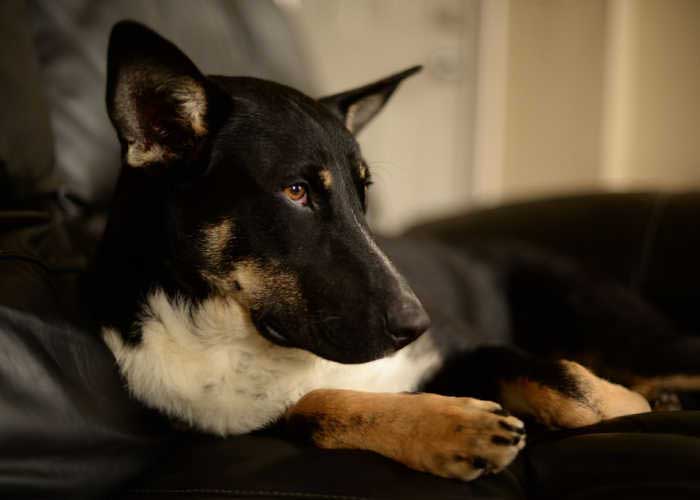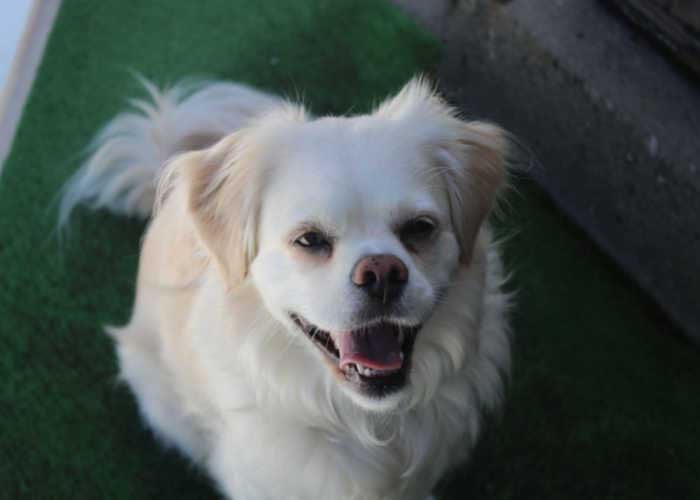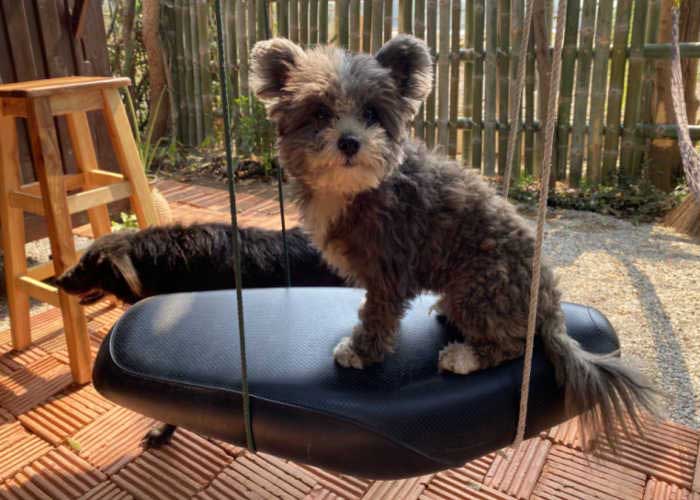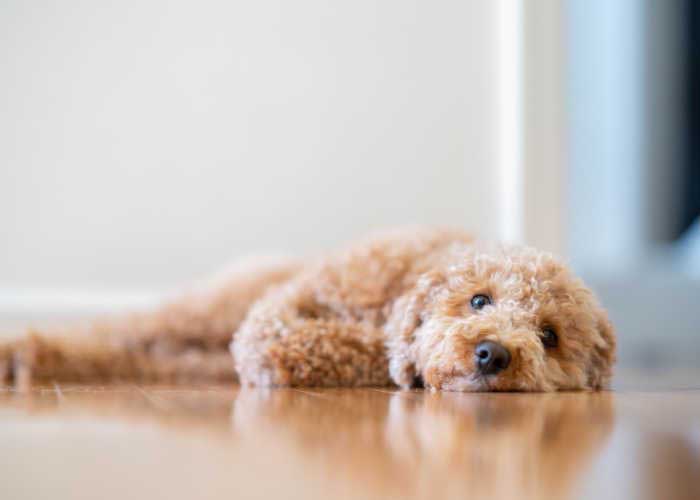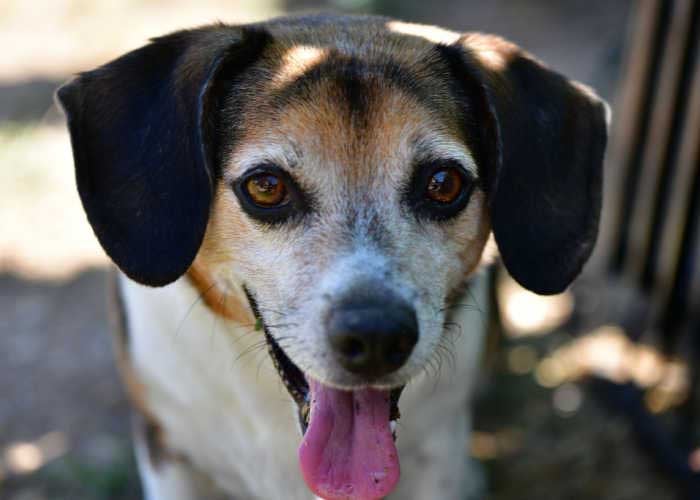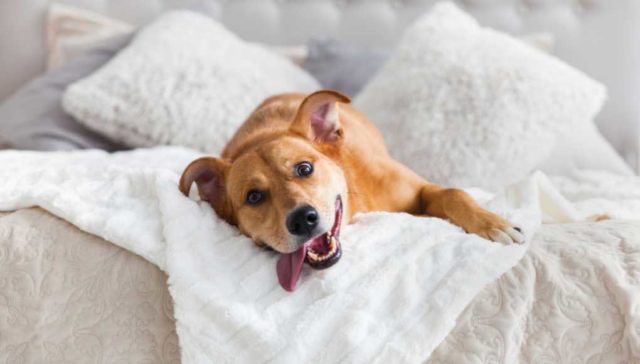
Table of Contents
- Best Mixed Breed Dogs for Apartments: Pet Ownership in Apartment Settings
- Our Top Picks of Mixed Breed Dogs for Apartments
- Frenchton (French Bulldog + Boston Terrier)
- Peekapoo (Pekingese + Poodle)
- Pomapoo (Pomeranian + Poodle)
- Havapoo (Havanese + Poodle)
- Chorkie (Chihuahua + Yorkshire Terrier)
- Beaglier (Beagle + Cavalier King Charles Spaniels)
- Cheagle (Chihuahua + Beagle)
- Sheepadoodle (Old English Sheepdog + Poodle)
- Rottle (Rottweiler + Poodle)
- Greyador (Greyhound + Labrador Retriever)
- FAQs about Best Mixed Breed Dogs for Apartments
- Closing the Book on the Best Mixed Breed Dogs for Your Apartment
Longing for a pet but have limited space to offer? Check out our top picks of mixed-breed dogs for apartment living.
According to the 2021-2022 APPA National Pet Owners Survey, over 60% of households are living with dogs. This may be true for homeowners but not likely for renters.
Despite such a high percentage of pet ownership, it may still be hard for renters to find a place to live that will accommodate them and their four-legged companions.
As a matter of fact, this problem in finding a pet-friendly apartment is a leading reason why these loving creatures wind up in shelters.
Making the life decision to reside in an apartment certainly has its advantages, such as better affordability and less maintenance.
But, the downside for dog lovers is that certain breeds are just too active or too noisy for a small living environment.
Apartments can be a bit cramped for dogs and may not provide them the space to run around and be free.
Yet, many of them can do well in small spaces, provided that their needs are met.
Choose the right breed for you. Aside from purebreds, you may also consider checking on mixed dogs while you’re at it.
Not only are they the latest trend in dog ownership, but mixed breeds can often be a better choice since they offer the best of both worlds.
So, if you need a loving roommate, don’t forget to count them in!
Best Mixed Breed Dogs for Apartments: Pet Ownership in Apartment Settings
Before every other consideration, make sure to check with the management before getting a dog as some of the pet choices may not be allowed by your lease.
There may be restrictions not only for the size but on breeds, as well.
Part of being a tenant means following the rules and regulations set by your apartment complex. Depending on where you live, you may be required to pay a larger deposit.
Most apartment buildings will charge monthly pet fees to ensure you are aware of any damages your pet causes. The pet fee also covers the cost of repairing any destructions when you move out.
Choosing Mixed Breed Dogs for Your Small Space
A dog’s size and energy level can cause problems, but that doesn’t mean raising one is impossible. In fact, many mixed breed dogs are happy to live in apartments.
You may think it’s simpler to own smaller pups than large ones since they take up less space. Also, giant paws and long legs don’t always mix well with tighter quarters.
But the truth is, a dog’s suitability depends on its personality, needs, and exercise routine.
Yes, size does matter, yet your living space shouldn’t be the only consideration because some may be larger but have lower activity levels than others.
In conclusion, there is no need to rule out large dogs as some have relatively low energy requirements, making them a better choice than smaller breeds.
Considering Mixed Breed Dogs for Your Indoor Living Space
Regardless of the breed and size, you will need to get your pooch outside regularly throughout the day to stretch its legs.
High-energy breeds require hours of physical activity each day, so they may not be ideal for smaller spaces.
While dogs with lower energy levels may require less exercise, they still need to maintain physical fitness or they become depressed, destructive, and overweight.
As an apartment dweller, you should also think about the experts’ suggestion of getting dogs that are couch potatoes.
They are generally calm and quiet while enjoying most of their day snoozing on the couch.
Furthermore, consider your neighbors who might not appreciate your pet’s enthusiastic barking. In closed quarters, you’ll have to make an effort to keep the woof to a minimum.
When deciding on a dog for your apartment, the best course of action is to look at your lifestyle.
You can then decide which breed works best for you based on how much time you can commit.
Remember, these balls of fluff are social animals that need socialization and positive experiences to grow up as well-rounded pets.
Be sure to make time for walks around the neighborhood or to dog parks to burn off some energy.
Provide some ways to have fun during the day and fulfill their exercise needs. Keep them occupied as restless dogs tend to act out.
Invest time in crate training to give them their own space to rest and relax. This also prevents them from getting into trouble while you’re not around to supervise.
Taking everything into account, you are now ready to embark on a pet owner’s journey.
Our Top Picks of Mixed Breed Dogs for Apartments
For mixed breed dogs, there are several options to choose from when selecting a pet.
So, to help you decide which breed it will be, we’ve compiled our top picks you’ll surely fall in love with.
Frenchton (French Bulldog + Boston Terrier)
To create a healthier French Bulldog, the Frenchton mixed dog started when breeders intentionally mixed the French Bulldog and Boston Terrier.
Also called Froston, Faux Frenchbo, and Frenchbo, it is an outgoing pup who is up for family adventures. That being said, this crossbreed makes an easy traveling peer.
Frenchtons are sweet in nature and love children of all ages. Their size is perfect not to knock over toddlers and sturdy enough not to get injuries easily.
Peekapoo (Pekingese + Poodle)
The Peekapoo mixed breed dog was developed in the 1950s by mixing the Pekingese with a Miniature or Toy Poodle.
It is one of the oldest designer breeds, but gained popularity by the early 1960s. This fur baby is so loyal that it will be content just by sitting by your side.
Although gentle, Peekapoos are protective of their families. To defend their owners with all their might, they will bark as loud as they can since they are naturally suspicious of strangers and new dogs.
Pomapoo (Pomeranian + Poodle)
In 1990, breeders started to purposely mix the Pomeranian and Toy Poodles in North America in an attempt to minimize the health problems commonly associated with pure breeding.
The Pomapoo mixed breed turned out to be an intelligent and affectionate companion dog. Today, it is cherished as a laid-back furry friend.
Pomapoos have happy personalities and are typically not aggressive or shy. These crossbreeds are very loving and they know how to handle children gently.
Havapoo (Havanese + Poodle)
Also known as Havanoodles, Havadoodles, and Poovanese, the Havapoo mixed dog likely started in the 1980s together with the other Poodle mixes.
It came to be after combining with a Havanese. While it may bark on alert, this designer breed is calm and gentle to be a guard dog.
Havapoos are very affectionate and can do very well with other animals and small children. They are loving lap dogs and are happiest with their families.
RELATED: Poodle Doodle Doo! The 10 Best Poodle Mixes
Chorkie (Chihuahua + Yorkshire Terrier)
In the early 1990s, breeders intentionally mixed Chihuahuas and Yorkies, creating the adorable Chorkie mixed breed dog.
Described as outgoing and fun, it is a loyal canine companion that may show aggression towards strangers. This crossbreed enjoys play sessions or just hanging around the house.
Even though energetic, Chorkies don’t require too much exercise. A few walks per day should suffice to keep them happy and healthy.
Beaglier (Beagle + Cavalier King Charles Spaniels)
Designer breeders started intentionally mixing Beagles and Cavalier King Charles Spaniels in Australia, resulting in the Beaglier mixed breed.
It has a fun-loving personality to play with kids, but may be easily injured by overly excited children.
This designer breed prefers to be around adults or older kids who know how to play gently.
Although they have the size of your average lapdog, Beagliers have high energy levels. You can expect them to prefer a game of fetch rather than dozing off on the couch.
Cheagle (Chihuahua + Beagle)
The Cheagle mixed breed dog may have existed naturally, but breeders started to intentionally mix the Chihuahua and Beagle dog breeds in the late 1990s.
Barking is its favorite pastime. So, this crossbreed makes a great watchdog as it alerts you to anyone at your door.
Cheagles tend to latch on to one family member but can still get along with others. They may be best suited to families with older children or a one-person home.
The ones mentioned above are mixed dogs that are expected to be small in stature. So, this time we are going to mention a few dogs to be on the medium to large side.
Sheepadoodle (Old English Sheepdog + Poodle)
The Sheepadoodle mixed breed dog is a cross between an Old English Sheepdog and a Poodle. It goes by many names, including Sheepdogpoo, Sheepdoodle, Sheeppoo, and Sheep-a-poo.
Weighing 60 to 80 pounds and standing from 16 to 22 inches, this crossbreed gained popularity among allergy sufferers.
Sheepadoodles make great therapy or emotional support dogs for their natural ability to read human emotions.
Rottle (Rottweiler + Poodle)
The Rottle mixed breed is a cross between the Rottweiler and Poodle dog breeds. It is also called Rottidoodle and Rottipoo.
Grows about 12 to 27 inches tall and typically 60 to 90 pounds in mass, this designer breed was created in hopes of creating a highly trainable dog with less shedding than the short-haired Rottweiler.
Rottles are incredibly smart and eager to please, making them relatively easy to train.
Greyador (Greyhound + Labrador Retriever)
The Greyador mixed dog is a cross between the Labrador Retriever and the Greyhound. It is sometimes called Lurchers or Greyhound Labs.
Ranging from 20 to 27 inches tall and usually weighing between 50 to 80 pounds, breeders started to develop this crossbreed in the 1990s, likely in North America.
Greyadors are known to be strong, fast, and graceful dogs.
FAQs about Best Mixed Breed Dogs for Apartments
Which is the best mixed breed dog for apartment living?
Generally speaking, smaller dog breeds like the Pomchi make excellent companions for confined spaces.
They adapt well and are perfectly comfortable in apartments or condominiums, with minimal exercise to keep them happy and healthy.
What is the best mixed breed dog to own?
The Cockapoo is a delightful dog that is easy to take care of for novice and timid owners. Its nature is sweet and happy which makes it a great therapy dog.
Which is the smartest mixed breed dog?
The Shollie is a good example among the smartest mixed breed dogs with both purebred parents known in the herding group.
It requires constant mental stimulation as it gets bored easily and gets destructive when needs are not met.
Closing the Book on the Best Mixed Breed Dogs for Your Apartment
Even though they have proven to be exceptional for apartment living, it’s important to remember that each dog is an individual.
This is especially true for mixed breed dogs since they are mostly unpredictable but said to have the best qualities of both purebred parents.
Understand their attitude for you to determine what to expect and how you can influence it. Be sure to pick a pet that fits your home, lifestyle, and personality.
And you’ve got plenty of choices!
By meeting their needs and with proper training, there’s no reason why any dog can’t thrive in an apartment.
Finding a home that accepts you and your pooch doesn’t have to be hard.
You may use online services to hunt down pet-friendly rentals, so you and your fur baby can live happily together.


